#predictions about india
Text
The audacity of white ladies to call my black ass YA characters "rude and annoying" on this black history month
#this is my first squarely genre-YA book and everything other black YA authors have complained about is so so true like yall so predictable#its honestly boring i want better for yall#step your pussy up#learn new racisms i wanna see some creativity#india was on here calling black people 'swarthy nightskin monkeys' go take some notes from them CREATIVITY
0 notes
Text
#entertainment news#breaking news#world news#india news#news#breaking crime news#get the latest fashion trends and news#read the latest political news updates#get the daily horoscope and zodiac predictions about your life#read the latest news from india in hindi
0 notes
Text
Today's Problematic Ship is the Satoshi

The Satoshi was a cruise ship owned by Ocean Builders, a company dedicated to "seasteading," an attempt to create a seabourne community free of laws imposed on dry land, with strong ties to the cryptocurrency movement.
The 1991-built ship, originally named Regal Princess but renamed Pacific Dawn in 2007, was purchased by Ocean Builders in the middle of the Covid-19 pandemic in 2020. The idea was to permanently anchor the ship in Panamian waters, as the central hub of an eventual community of "SeaPods", essentially individual houses at sea, which would be arranged around the Satoshi in the form of a Bitcoin B.
It quickly became evident that the people running Ocean Builders had no understanding of how to operate a ship: they initially failed to ensure their ship had certificate of seaworthiness to allow it to sail to Panama (where the venture was to be based), and even after this no-one was willing to insure the ship, making it impossible for passengers to live onboard. They also planned to re-engine the ship while it was out at sea, a physically impossible task to accomplish without sinking the ship in the process.
The leadership of Ocean Builders blamed all this on shipping being "plagued by over-regulation." (Many of our entries here at Today's Problematic Ship demonstrate those regulations exist for a reason). The end result was predictable: by the time the Satoshi arrived in Panama it had been sold to an Indian shipbreaker.
Except Ocean Builders had signed a contract they could not honour: according to the Basel Convention, which covers the disposal of hazardous waste, they weren’t allowed to send the ship from a signatory country (Panama) to a non-signatory country (India). Thus the sale was cancelled, and subsequently the ship was arrested by Panamian authorities.
Eventually, the Satoshi was sold in 2021 a different startup company, Ambassador Cruise Line. The new venture, who actually knew how to operate a cruise ship, started successful operations with the former Satoshi, now renamed Ambience, in 2022.
The Guardian has a detailed article about the saga of the Satoshi and the seasteading movement.
1K notes
·
View notes
Text
Keepers of the Quaich
This time, we're going to look at things a bit differently and this could very well be my most speculative post ever. So be it: it is a risk I am taking and warning you about from the get go.
The only thing Mordor understood about the next October 4 event organized by the US Chapter of The Keepers of the Quaich is something that probably gave them collective relief: S is not going to be with C on her birthday. Not together. Not on the same continent. Shut up, shippers, you are stupid.
As usually, Mordor takes things at a very primitive face value, without bothering for context. But they always focused on the lewd side of the story, not on its deep ramifications, of which there are many. Anything that denies S's halfwit manwhore image upsets them greatly.
The Scottish society of The Keepers of the Quaich is not one of those old, steeped in tradition clubs, but it is damn selective. It only dates back to 1988, which is almost five minutes ago, for Europe (and especially the UK) and is deeply rooted in Highlands' lore, celebrating excellence in whisky trade and promotion worldwide. General facts about it have already been discussed elsewhere, but with a bias and little to no context. Also, really LOL at Mordor's idiocy to think that was a fan promotion event and go ballistic for the members-only and by invitation access to it.
Membership is by co-opting and with a five-year proven performance history only (ten years, if you step up to Master level). You need not one, but two recommendations, which makes it harder to join than a Masonic lodge or the Rotary Club (and I know what I am saying, heh). That S could actively seek to be inducted, rather sooner than later, is pretty much clear, as he could use the network it readily provides, along with the prestige:
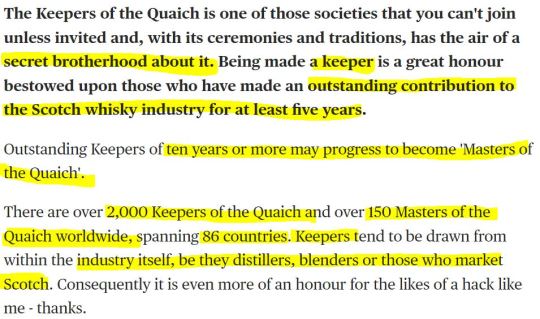
(Sourced at: https://www.diffordsguide.com/encyclopedia/341/people/keepers-of-the-quaich)
I first had a look at the list of its International Chapters and it is interesting to notice Muslim countries as Turkey or the Emirates each having their own chapter, which clearly tells me it's all about luxury and more specifically, luxury hospitality business, in that case. If inducted after the customary five years' wait, S could also make good use of the German chapter's (a market that proved to be very problematic for him) network, along with the Nordics and Netherlands, if he would think about cleverly expanding his trade in the EU. Last but not least, I would keep an eye on Brazil and India (along with the more predictable South Africa and Australia), because he already has a solid fanbase in the first one and well, Asia is always interesting, when it comes to alcohol business.
I did not really bother with the list of the Patrons, which spells a good and prestigious sliver of Debrett's Peerage's Scottish section. But I also looked at the list of the Management Committee, who does all the hands-on dealings and is directly responsible for the induction ceremony of new members. Aside from representatives of Diageo and Pernod Ricard (giants of the alcohol business world), a familiar name popped right at the bottom of the page:

Annabel Meikle, Director of The Keepers of the Quaich and as such, directly involved in the management of its activities (and probably also in all the underground shenanigans leading to the induction of new members, too). A great contact to have in your rolodex, judging by her public CV on LinkedIn:

Glenmorangie (also a member of the Keepers) - keep that reference under your sleeve, we are going to need it soon :).
Could she be related to...

I am leaving this without an answer, because I don't know and I will always refuse to go data mining for anything, but that sure as hell is not a common surname, as Smith or Martin!
At any rate, Mrs. Meikle is also (along with the Duke of Argyll, the current Keepers Grand Master) a member of The Scottish Committee of something very, very prestigious: The Worshipful Company of Distillers (https://www.distillers.org.uk/), based in London and founded in 1638, by Royal Charter (for “Body Politique and corporate” to govern the “Trade Arte and Mystery of Distillers of London” - how I love history, people!) granted by Charles I, a Stuart (of course). I am speculating and having visions of Livery status and Freedom of the City, followed by Knighthood for S (no bong needed, this particular narrative writes itself and believe it or not, it's not entirely without logic). And it is my strict constitutional right to be a poetic coo about it - that guy is smarter than we thought and I would curate that contact to death if I were him (but I am not, I am just a benevolent and intrigued observer, as you all know). Back to Earth from these optimistic conjectures, I will keep a tab on it, as I dutifully took note that one of their current interests is tequila:

Onwards to the US. We can have a fair idea of October 4th event just by looking at one of their few press releases on the occasion of the Chapter's launch gala, on September 25 2019, in New York (https://www.distilledspirits.org/wp-content/uploads/2019/10/KOTQUSA-Release-10.04.19.pdf - with quotes selected by me):
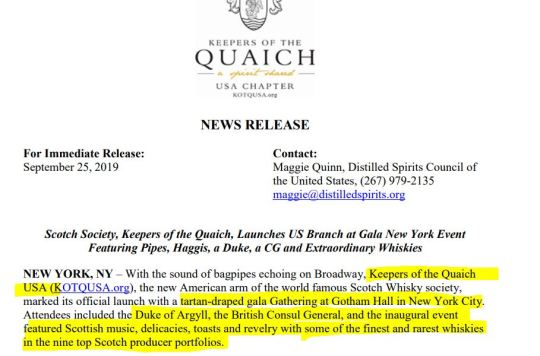


Moët Hennessy. Another reference to keep under our sleeve, for it will be soon very relevant. So yes, what has been speculated by Miss Marple is partially true: more business than aristocratic. But this is only if we do not consider as American aristocratic the venue of the next event. The Metropolitan Club is a very East Coast, WASP old money and (well, technically yes) Republican (but not MAGA Republican and this, to me, is very important for some reason) organization:
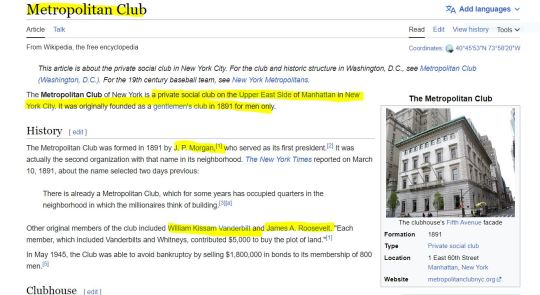
That was the state of play on Friday, folks, and I was already excited to share my optimistic findings with you. And then, C went to Paris and more dots started to speculatively connect. Bare with me for this long passegiata, I think it's worth it.
It was particularly important that C would be seen in a very friendly-casual pose with Delphine Arnault, out of all the other people attending that event. Not because Arnault is currently the big boss of Dior and Loewe (as I already explained here: https://www.tumblr.com/sgiandubh/729801825900953600/city-of-lights?source=share). And not only because C suddenly seems very interested to renew and expand her fashion days' old network. But also, because, as I already said, Delphine Arnault is also the daughter of her father and in France, business and family are always closely entwined. Always.
The French luxury market is roughly split between two behemoth players: Bernard Arnault (LVMH Moët Hennessy • Louis Vuitton S.A) and Antoine Pinault (Kering, ex- Pinault-Printemps- Redoute). These people and their businesses are number 1 and 2, respectively, on the global market. And out of these two, the only one very interested in the alcohol business is Arnault (Pinault does not deal in this sector).
So I took a look at his very diverse alcohol and spirits brand portfolio (25 references - https://www.lvmh.com/houses/wines-spirits/): rhum, brandy, champagne, tequila, wines (Argentina and even China). Two Scottish whisky brands: first Ardberg (the graceful peat from Islay). And - oh, hello, Mrs. Meikle - Glenmorangie, acquired by Arnault in 2004, after a bitter battle with Pernod Ricard (https://www.nytimes.com/2004/10/21/business/world-business-briefing-europe-france-scotch-maker-acquired.html):
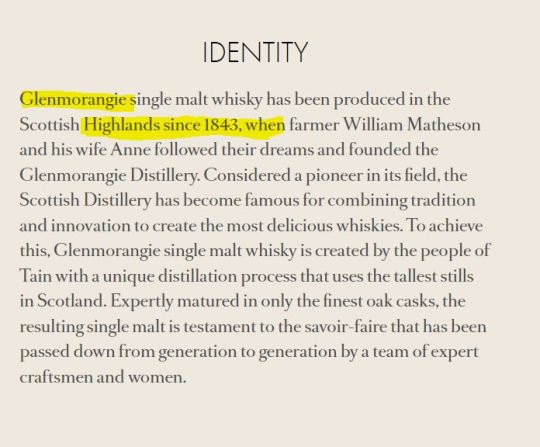
Back at Mrs. Meikle's CV - hers was a pivotal role in the post-acquisition reshuffle, as part of LVMH:

Coincidence? I think not.
And then also a bourbon reference. Woodinville (based in the state of Washington, USA) with a pitch that made me grin again like the Cheshire Cat:

Sounds familiar? Rings a bell? See a pattern? You should: no, it's not S in disguise, but it could be SS in a couple of years, if S decided to sell it for a hefty profit.
But I was also interested in what is missing from this catalogue.
NO GIN.
Who knows? Maybe these French people could be enticed? In that case (and remember: I am SPECULATING), it would have to be a brand with a proven track record. You see, Arnault is famous for always buying only brands with a proven history and proven recognition (Tasting Alliance, anyone? LOL). Up until now and as is, FMN is just a pet project and a virtual endeavor. Nothing more and we shall see. But that little wild Scottish gin which could win hearts and already an award in Frisco is something completely different.
Now, then. You connect the dots. You draw your own conclusions. I see something very intriguing here and, as I already told you, the business underground situation is completely different from the bland façade.
You see, this is not about papers or checking a pulse or awkwardly grabbing a fist on some stairs. This is show me the money time. This is all about finding unexpected connections, at a very high level and on a very narrow niche.
So you think S and C can't stand each other anymore?
Humbug. They have each other's back from Day 1. And more. Ship on, ladies. Whatever clownery these days might bring, I know what I know. And by now, you should start asking yourselves the real questions, not if Waldo is with Carmen Sandiego (we KNOW), nor if they were online at the same time or not. I mean, that's cute: but to be honest, I think we're past that... uh... waypoint?
Next on my list is that Lallybroch trademark thing. This is the most complex one and I will take my time. I may speculate, but never without a logical base. And I always take these things very seriously.
Keepers of the Quaich, indeed. :)
246 notes
·
View notes
Text
A Phone Call Away
this is just goldenpunk fluff idk what else to tell you, there's no plot to this
“Hi,” Pav whispered, as soon as the call connected.
“‘ello,” Hobie hummed. “Wha’ are ya’ upto?”
“Nothing, I’m just out getting some groceries. Auntie sent me out and told me not to come back, until I find the brand of tea she likes,” Pav smiled and Hobie could feel the sun shining on his face. Then he frowned. “Are you still in bed?”
Hobie laughed. ”I was readin’ a book,” He said, holding up 1984.
“Gadhe. Tell me you've eaten something, at least,” Pav shook his head, putting a bag of potatoes in his cart.
“Ate some leftover chips, luv’, don’t worry about it.”
“I am going to worry, it’s like 2 in the afternoon at yours, and you’re still in bed. I’m not even there to cook you something.” Pav whined. Hobie felt something warm curl up in his chest.
“Awwh, babe, you love me?”
“Of course, janemann, I love you so much.” Pav held up a pack of tiny biscuits Hobie recognised to be ‘little hearts’. “I would literally kill to kiss you right now.”
“I’d die to kiss ya’.”
“Yeah.” Pavi stared at something off camera, doing some calculations with his unoccupied hand. “Hey, do you think I should get the family pack for 150 rupees or buy two 4-packs of maggi at 160?” He turned to the camera, showing a yellow pack of noodles to Hobie.
“I don't even know the difference,” said Hobie, finally getting up from his bed, looking for the copper water bottle Pav had bought for him.
Pav hummed, “I’m getting the two 4 packs,” He dumped the said items into his cart. “Should I get schezwan chutney for you?”
“The red spicy one? Oh fuck yea’ ov' course,” He said, watching the shirt ride up Pav’s shirt as he reached for the sauce on the top shelf. “It too high for you, shona?” Hobie asked, seeing the predictable blush rise up Pav's face at the hindi pet name. He loved it when Hobie tried and butchered hindi.
“Jaanu, you know I'm in public. I can't respond like I want to, that's so unfair.”
“I know, mere subah ki kiran,” He said, voice raspy, words feeling unusually rounded yet familiar.
“Hobie!”
Hobie laughed. He could see the deep, almost-maroon blush high on Pav’s cheeks.
“Have you been learning from Gayatri again?” Pav asked, voice accusatory, and a sparkle in his eyes.
“I'm not gunna conform o' deny tha',” Hobie finally found the bottle under the bed, and drained it.
“I love you so much, you ass.”
“I love ya too. Wha' time is it at yours now?”
“Around eight pm, why do you ask?”
“I thought we’d eat together, you could have dinner early and I'd’ve a late brekkie.”
“It’s a late lunch at this point,” Pav scolded. “But yes, I'd like that. What are we eating?
“Mac n' cheese?”
“You know that auntie would kill me if i told her that's my dinner.”
“Jus' tell her it's a snack.”
“You are the snack,” Pavi giggled, highly weird behaviour when in public, but Hobie liked the thought of them being disgustingly cute for everyone to see. Everyone to see their love. Everyone to see how important Pav is to him.
Another part begged him to hide Pav away bc what if his enemies hurt Pav to get at him?
Hobie shook his head, because what enemies did he have? He was a tattoo artist and Pav was a physics academic. It's not like they were fighting supervillains everyday.
Pav thought the head shaking was for his comment because he doubled down. “No you definitely are.”
“Does tha' mean you wanna eat me instead ov' the mac n’ cheese?”
“No- I mean- Yes, but what the fuck Hobie, I’m literally at the supermarket, and yes I have earphones in, but-” Someone knocks into Pav.
Hobie recognised the glint of her earrings a moment before he heard her voice. “Oh my god, Pav! You didn't tell me you were back in India?”
“Gayatri! I'm sorry, I came back like 3 days ago, and I've been too busy with packing Maya auntie’s things, I literally forget to sleep,” Pav laughed.
“Sounds like an excuse, Pavitr Prabhakar, you little bitch. If you had let me know, I'd have helped you.”
“That's exactly why I didn't tell you, aren't you working on that new movie? With Ranveer Singh in it?”
“So what, I could make time? And what kind of friend would I be if I didn't help Maya auntie and you to pack her things- Where's she going by the way?”
“Oh, uh- she's moving to the UK, in with us.”
“Oh, she's leaving?”
“Yeah, Hobie and I thought it'd be better if she lived with us and UK has better resources aur sach bolun to unko mujhe apne paas hi rakhna hai.”
“Yeah that's good, I'm going to miss her, I'll miss you both,” Gayatri's voice seemed sad. “But now I've got an excuse to barge into your house.”
“Wasn't I reason enough?”
“You? yes. Hobie? yes. Dono saath mein? Nope, thank you I'm pretty sure I’d have to bleach my eyes.”
“Thats-”
“Shut it. Speaking of hobie, show me the ring?”
Hobie watched as Pav swapped hands, bringing up his left ring finger into view, a familiar ring shining under the harsh grocery store lights.
Gayatri muffled a squeal. Pav’s grin was so wide that Hobie thought it was bleeding off him to Gayatri and him because Hobie found himself smiling into the cabinets as he took out a box of pasta.
“Ohh! kitna pyaara hai! is that real moonstone?”
“Yeah, it's covered with a thin layer of artificial diamond, it's custom made.”
“I'm so jealous. if my next partner doesn't put in at least this amount of effort, i'm breaking up,” Gayatri shoved Pav gently.
“Hobie would love to hear that. Hey, Hobie, did you hear that?” Pav turned to Hobie gleefully, Gayatri butting into the frame with a delighted look.
“Hi Angrez, wasn't stealing Pav’s heart enough? You had to take Maya auntie too?”
“Oh you can’t hear him, take my other earbud.”
Gayatri takes it, sticking out a tongue at both of them.
“Hello guruji, you are the one 'elpin' me charm them,” Hobie saluted her with the spoon he was using to scoop out salt.
“Oh my god you are so impossible, what's the status on the Kohinoor?”
“Still on the king's head, regrettably.”
“You promised to get it back if I let you have Pav-”
“Hey, am I a tradable commodity now?”
“-at this rate you have to return the entire British museum, including interest.”
“I'd gladly do tha' on its own.”
“I’m going to accompany Pav to yours to make sure you do just that. Okay, guys, you can get back to your mushiness. I need to get going.” Gayatri waved at him and handed Pav his earbud, disappearing out of frame.
Pav looked at him with a giddy smile “I saw you put pasta in water, what do you want to bet I can check this out and get a take out box in ten minutes?”
“Not one euro or a rupee, I know ya can, including Maya auntie’s favourite tea.”
“I already found it,” Pav held up a box and Hobie couldn't resist blowing a kiss.
“You're on then,” He said, holding up a bag of shredded mozzarella. “Let’s see who gets mac n’ cheese done first.”
___
Translation:
gadhe - you ass (but this is the animal ass)
janemann - love of my life (not exactly but close enough)
maggi - verrrryyy popular desi masala ramen noodles
copper infusion water is considered healthy hence the copper bottle
schezwan chutney - a chilli garlic paste its delicious idk the recipe
shona - gold/love
jaanu - my life
mere subah ki kiran - my morning sunshine
Ranveer Singh - famous actor
aur sach bolun to unko mujhe apne paas he rakhna hai - and to be honest, i want her to stay close to me
dono saath me - both of you together
kitna pyaara hai - its so cute
angrez - foreigner (of the english kind)
guruji - extremely respectful word for teacher (when i say extremely respectful i mean it)
kohinoor - famous diamond stolen from india during British Raj
A/N:
this took me forever to edit
i tried a different process of writing which was quicker to finish but took so long to edit iwndiedksndid but ill do this again bc i like this way much better
this fic was inspired by my parents shout out to them for doing long distance straight after marriage with a 1 year old (me) i could never
comment if ya want more bc they keep me alive
#pavitr prabhakar#chaipunk#hobie brown#hobie x pavitr#pavitr x hobie#across the spiderverse#goldenpunk#atsv#goldenpunk fanfic#chaipunk fanfic#day 2- far away/domestic#disgustingly domestic#gayatri singh#maya auntie mention#they were fiances#there's no substance to this its all fluff#goldenpunk ship week#goldenpunk fanfiction#this is inspired my parents#im not even kidding
51 notes
·
View notes
Text
Who we think we are, what we believe our bodies are, has been shaped by the imaginations and social constructs of external systems: education/academia, religion, capitalism, colonialism, patriarchy and their predictive programming. We have been taught to live subject to and at the effect of these anti-life systems instead of INFLUENCING these systems in favorable ways for the wellbeing of life. What we think we are has been shaped by the beauty, but mostly the sorrows, inherited from our ancestors. It has been shaped by stories we have been taught about what is means to age, be a woman, a Black woman, a Brown woman, an Asian woman, a White woman, etc. and even what it means to be Aries, Virgo, etc. And it also been shaped by the toxins in the food we eat and air we breathe. You have to be willing to do the work to heal these identity distortions that live inside your body and stagnate your cells, tissues, and organs from living in new narratives. Cook your own food more. Focus on your slow breathing more. Open up your detoxification pathways and create more blood flow. Stretch, arch, bend, push, bounce, and pull more. Sing more. Sweat out the old more. And remember that aging, as we’ve been programmed to perceive it, is a belief like everything else. And any and all self-harm over the years is merely opportunity to re-prioritize personal care practices. Because there is MORE to who you are and more to learn about everything. A lot of times we stick behind what has been normalized in the matrix as true and miss following the truth of our own internal instinctual wisdom and guidance. -India Ame'ye, Author
38 notes
·
View notes
Text
Time to explain a random finnish meme: Nää tyypit elää tällä tavalla joka päivä
The original sentence came from a reality TV show Kill Arman, by the iranian-finnish tailor/show host/tv personality Arman Alizad. The idea of the show was that he travelled around the world to see different cultures and get the shit beaten out of him. To be more specific, each episode introduced a different traditional form of matrial arts, and having Alizad train in it. At the end of the episode, he would face a master of that fighting style, predictably getting his ass handed to him. It aired in 2009 and while I don't recall ever seeing a full episode, Alizad's humour and personality was absolutely the backbone of the show.
There was one episode - I think the location was somewhere in India - where the local peoples' poverty was simply so baffling and awful that Alizad took a moment to get serious, looked at the camera, pointing to the muddy slum street behind himself, saying "think about it, these people actually live here, like this, every day", with the air of being astonished and disgusted that there really are people who have no other choice, and to remind the finnish audience back at home just how good they have it. Alizad himself had fled from Tehran with his family during the Islamic revolution when he was only eight years old.
Explaining why this is funny is kind of difficult, since while there's nothing laughable about what he said, the way he worded it was unusual. Speaking fluent finnish with only a faint accent, he also picked up the distinct dialect of the southern area of Finland where his family settled (finnish dialects are so regional that you can sometimes tell what city someone is from, with 10 km accuracy, just by what word they use when they say "you"), and the contrast between saying something that serious and heavy in the extremely informal way he said it was funny.
It became a meme, where people would photoshop the image of Alizad pointing at something on behind himself and put it on front of something else, captioned with the citation (either as it was, or altered in some way to fit the image). The new background - a school, a bar, an unemployment office, a psychiatric ward, or the city of Kouvola - and the people in it were therefore implied to be living in such astonishing and sickening squalor that Alizad would need to remind you, the viewer of the meme, that these are real people who actually live like this every day. That there are actual human beings unironically living in Kouvola.

498 notes
·
View notes
Text
I know very little about this series, so off the bat, I am going to make so many incorrect predictions. This should be highly amusing for all of you. For me? Humorously frustrating.
So, most of what I know about LEGO Monkie Kid is that it is heavily inspired by Journey to the West. And that it will inevitably hurt me. As to be expected.
Other than that, I am going in to this series blind. I have a lot of questions - some about the names they ended up choosing to go with. My best guess is probably the typical English names I know from the 1998 cartoon (Monkey/Monkie, Tripitaka, Pigsy, Sandy,... I forget what they called the dragon horse - Horsey?... probably not, etc.). Some about the journey or quest they'll go on, if they have to go on a journey or quest at all. If so, will it take 14 years to retrieve the Buddha Sutra from India? Or will it be a lot shorter.
And some questions about what villains will appear. Red Kid? The Scorpion Demoness? Bull Demon King? ...I can't remember any others atm.
I guess the main question is: Does this follow the original story but told in a modern setting? Or does it take the PJO route of being a retelling of the story, but new characters take on the roles?
Let's find out, shall we?
19 notes
·
View notes
Text
I have said this before, and also gestured at it in a lot of my recent posts, but every time I think about it I am increasing convinced that the explanation for the Great Divergence is basically "there's nothing to explain".
Ok, maybe that's a little unfair: there is something to explain. Western European states and the US saw a series of remarkable technological leaps during roughly the period from 1600 to 1900, which allowed them to achieve astonishing wealth and global political power. There is an explanandum here.
But what I mean when I say there's nothing to be explained is the following. We already have good reason to believe that technological growth is approximately exponential. Technology is self-compounding: the more of it you have, the more of it you can develop. And very many metrics that we would expect to correlate with technology, like agricultural yield and life expectancy, seem to grow exponentially. So I think the idea that technological growth is more-or-less exponential is well evidenced. When something grows exponentially, there is necessarily going to be a point of rapid take-off, a "foom". This is also something we see with technology, and life expectancy, and so on, particularly around the time of the industrial revolution.
This is fairly uncontroversial.
Another fact that I think is uncontroversial is that technological and scientific growth are subject to network effects, and subject to local material conditions. Societies that are generally wealthier may have more time and resources to spend on science, etc., and once you have a bunch of scientists working together in a specific place and sharing ideas, you get more rapid advancement. This seems true even in today's highly interconnected world, which is presumably related to why a small number of universities produce so much cutting edge research—they have the funding and the networks of top people. And I think there really is a sense in which you have many more opportunities for fruitful research and collaboration at e.g. an R1 university than an R2 university. The network effects still matter a lot. In the world before the twentieth century, when information traveled much slower, network effects would presumably have been much more important.
This is, again, a conclusion that I think is independently obvious and uncontroversial. If there was some sense in which it was not true, that would deeply surprise me.
But, look: the conclusion of these too facts taken together is basically that the observed course of history was (in a sense) inevitable. The second fact predicts that you'll get localized "scientific booms" through history, where a bunch of progress is being made in one area. We see this multiple times, with "golden ages" of science and philosophy in the Bronze Age Near East, in the Greco-Roman world, in ancient India, Tang China, the medieval Islamic world, and so on. Obviously I think in some sense "golden ages" are post hoc constructions by historians, but I think there's likely at least some reality behind them. So you have these localized scientific booms that slowly contribute to the exponential increase in global scientific knowledge. And it follows, if scientific growth is exponential, that there's going to be a foom. And it follows that whoever's having a boom when there's a foom is going to benefit a lot—in fact, exponentially more than anyone has before!
I am tempted to call this the "boom and foom theory" of the scientific and industrial revolution.
But it's not really a theory. It's a prediction of two existing theories about technological growth generally, taken together.
And it seems consistent with observation to simply say that Western Europe got lucky, to be having a boom when the foom happened. This is what I mean when I say "there's nothing to explain". I am not really sure we need anything extra to explain why this happened where it did geographically. I mean obviously you can dig in to the historical particulars, but ultimately... it was bound to happen somewhere.
Maybe there's something I'm missing here, or maybe I'm being excessively deterministic. But I think probably that any more particular theory of why the Great Divergence happened needs to justify itself against this one; it needs to explain why it adds anything to the picture that this does not already account for. But I don't know.
46 notes
·
View notes
Text
March 2024 Important Dates

AKA my notes on The Astrology Podcast's March Forecast.
February recap: The conjunction between Mercury, Venus, Mars, and Pluto in Aquarius conjunction has aligned with new tech developments. The Venus-Pluto conjunction heralded OpenAI's new text-to-video generator and the ensuing discussion on its potential political, labor, and artistic effects. Mercury was conjunct Mars and Venus trine Jupiter (with Virgo Moon completing a grand trine & involving the Saturn-Pisces opposition) the day Neuralink tried its first human subject. How will different parts of society react to further developments in cybernetics and body augmentation? Past occurrences of astrological alignments can help us make predictions. Advances in robotics during a major transit in the humanistic sign of Aquarius will challenge us to redefine what it means to be human. On February 10th, around the Mars-Pluto conjunction, a group of people set a self-driving delivery car on fire in San Francisco. These robo-taxis are likely going to increase when Jupiter enters Gemini, and indeed a few companies are poised to launch in other cities.
In other Pluto in Aquarius news, last episode Chris noted there's work in using X-rays to ancient scrolls from Herculaneum and Pompeii that can't be opened without incurring damage. On February 5th, the day of the Mercury-Pluto conjunction, the first images of one of these scrolls have been made available. This fits with Mercury-Pluto themes of lost or buried information coming to light. On the same day King Charles of England's cancer diagnosis was announced--an announcement of mortality. We also had the first privately-funded lunar vehicle landing. Pluto makes large thing imperceptibly small and makes microscopic things enormous.
In Saturn in Pisces news, in 2020 Chris predicted success for Miley Cyrus's Saturn return and indeed she won the Grammy. This also marks part 2 of the Dune movie--the book was written under Saturn in Pisces as well. Other influential sci-fi & fantasy stories were written under Saturn in Pisces like Lord of the Rings, and our hosts predict that a new classic will be born during this transit. In other Mars-Pluto news, we have ambiguous stories about nuclear weapons and Israel's announcement of storming Rafah. Unfortunately the upcoming eclipses (connected to 6 months ago) do not bode well for cessation of warfare. On February 15th, farmers in India have begun striking again, and doctors in South Korea walked out on the job to protest working conditions--Mars in Aquarius squaring Jupiter-Uranus in Taurus reactivates these ongoing labor disputes.
Our hosts recorded the forecast before the perfect Mercury-Saturn-Sun conjunction in Pisces hit on February 28th (the day I'm typing this!), which is one of the major influences over the first half of March. The other big influence is Mars-Venus in Aquarius. In the mutable, indeterminate sign of Pisces, Saturn doesn't bring us as much order as he did in the previous two signs of his domicile.
March 2nd/3rd - Venus square Uranus
Venus in Aquarius squares Uranus in Taurus--either a change is needed to bring us peace and pleasure, or something is disrupting our pleasure. Austin says either way, this placement prompts us for significant changes. Venus's is overcoming Uranus (earlier in the zodiac, has the upper hand), so we can make good use of this placement if we shake things up a little bit in relationships.
March 9th/10th - Mars square Uranus, Mercury enters Aries
Mercury has entered the sign where he'll retrograde, stretching what would normally be a transit of a few weeks into 2 months. Mercury in Mars's sign amplifies the wishes of the red planet, who's doing some pretty interesting stuff. In a firey Mars-ruled sign, Mercury wants something practical to do. This clarity and decisiveness will be welcome after all the indecision of Pisces. However, the North Node is in Aries, with the power to obscure things even when it's not blocking the Sun's light. There will be an eclipse here in April, so the pathfinding is tricky. We'll definitely be doubling back as Mercury prepares to retrograde. Sometimes you need to dive into things while you have the vision, yet before you have the rationale. Austin likens it to clearing your way through thick jungle terrain to determine whether a route is viable--it's only by going forward that you find out that you're on the wrong path, and thus, where the right one is. Mercury retrogrades teach us to learn from our mistakes--third time's the charm!
Mars follows Venus's path, and along with Mercury, weighs heavily on the upcoming lunation. Mars-Uranus connotes surprise attacks, sudden severing, unexpected explosions. Internally this can make us feel restless and impulsive. Keywords: recklessness and action without planning. Think of a cigarette being dropped near an oil drum. Technology disruptions are also likely.
March 10th - Pisces New Moon
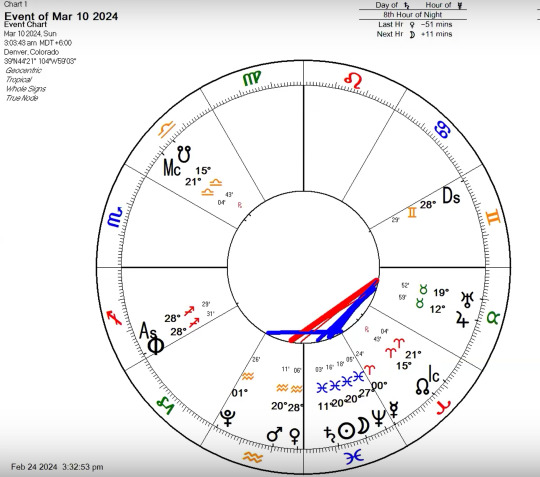
Saturn and Neptune are close by to this lunation, and though Mars-Uranus is weighing in, Mars in particular is ultimately reporting to Saturn's broader plan. As Neptune and Saturn approach their conjunction, we'll seek escapism and the imaginal as a respite for our fatigue. We need to step out from being immersed in these waters. Mercury conjoined Neptune on the 8th before he left Pisces, leaving the imprint of confused or empathic communications in the air as the lunar cycle resets for the month.
March 11th/12th - Venus enters Pisces
From here she builds up to a conjunction with Saturn at 11° on the 21st. As the sign of her exaltation, she's better able to bring harmony and reconciliation in our relationships, though Saturn brings a cool distance to our relationships. She'll conjoin Neptune in this sign next month. We may also see some kind of artwork that resonates with people on a deep emotional level.
March 17th - Sun conjoins Neptune, Electional chart

At around 1PM local time, this chart has Cancer rising with a dignified Moon in Cancer, applying to a trine with Venus at 7Pisces and sextile with Jupiter in Taurus in the 11th house. This chart occurs before things go crazy later in the month and is the best time to start something new. It's especially good for friends, groups and alliances and doing new things outside of the box.
March 18th - Mercury enters shadow (not pictured)
Mercury hits 15Aries, the point he'll retrograde back to, at the same time as he conjoins the North Node. This is a precursor of things that will occur in April.
March 19th/20th - Sun enters Aries
This puts the Sun in the same time as the Node that will eclipse it.
March 21st - Venus conjoins Saturn
Saturn and Venus bring a sort of melancholy beauty to things. Though we may see them at odds for signifying discipline and love respectively, Saturn does exalt in Venus's sign of Libra. In the sign of Pisces empathy is especially relevant--think understanding each other's feelings because we've suffered the same things. Nostalgia is another important keyword.
March 22nd - Mars enters Pisces
This puts him on track to contact to Saturn (exact cojunction c. April 10th)--a dangerous combination. Along with the Sun in Aries and Mercury slowing, this represents the event horizon of major developments for the rest of the month and early April. This will be the first Mars-Saturn conjunction in Pisces; note the Aquarius conjunctions in 2020 and later years coincided with the COVID lockdown(s). Sea lane transit will likely slam on the brakes as well, and current maritime conflicts will see big developments. More figuratively we may ask "where are we going, and what dangers lie ahead?"
March 25th - Libra Lunar Eclipse
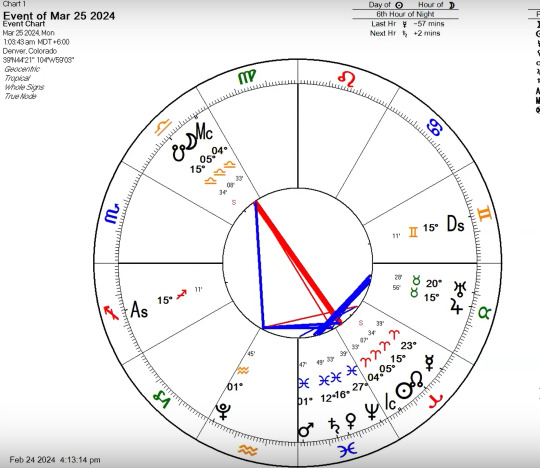
For about a week things have been building up to this eclipse. Its twin will be visible across much of the United States in early April, meanwhile a comet will start to be visible in the night sky. Mars in Pisces copresent Saturn weighs heavily on this eclipse. The pace of events starts moving quickly and chaotically around eclipse season, and things start to move rapidly up or down, especially for prominent people & companies. This eclipse represents a culmination or next chapter of events started in October--major beginnings and major endings (in the Libra house of your chart for individuals). The picture may begin to get clearer. It's not the last installment, but things are clearly underway. Unfortunately this does not bode well for ongoing global conflicts. We can't see clearly with the eclipse, meanwhile Mercury is slowing down about to station retrograde, while right on the North Node. Combined with dangerous Mars-Saturn, it's a bit of a crazy situation. Jupiter's approach to a conjunction with Uranus indicates some surprising, amazing wins, and some people will find unexpected good fortune once the smoke clears. However, not everyone will be able to count on winning the Jupiter lottery here. (Later in April, when Jupiter conjoins Uranus exactly we can expect some kind of freedom and liberation).
The two weeks between these eclipses will be very active, dramatic, and chaotic, with beginnings and endings galore. In the Indian astrology dasha timing technique, the US Sibly chart has been in a time period ruled by Rahu (north node) since the early 2010s, making any eclipses visible in that country especially important to it. This is a time to be flexible!
#astrology#transits#forecast#the astrology podcast#march 2022#mars square uranus#venus square uranus#mercury in aries#libra lunar eclipse#mars conjunct saturn#mars in pisces#saturn in pisces#pluto in aquarius
21 notes
·
View notes
Text
i watch a lot of street food videos and the comments are always sooooo predictable. if it’s japan or korea all of them talk about how delicious it looks, if it’s chinese you get a lot of people talking about it looks too spicy or exotic alongside reddit tier racism. but by g-d the second you get to india or MENA countries or even central asia everyone goes full churchill genocidal famine racist. you’re watching some lovely grandma from uzbekistan make some dumplings and all the comments are just westerners frothing at the mouth about how it’s probably all full of diseases and rotten and unhygienic.
22 notes
·
View notes
Text
#Find Latest World News in Hindi#Chhattisgarh News in Hindi#Read the latest news from India in Hindi#Read the latest Political news updates#Breaking crime news#Get the daily horoscope and zodiac predictions about your life#Get the latest fashion trends and news
0 notes
Text
The contradictions of China-bashing in the United States begin with how often it is flat-out untrue.
The Wall Street Journal reports that the “Chinese spy” balloon that President Joe Biden shot down with immense patriotic fanfare in February did not in fact transmit pictures or anything else to China.
White House economists have been trying to excuse persistent US inflation saying it is a global problem and inflation is worse elsewhere in the world. China’s inflation rate is 0.7% year on year.
Financial media outlets stress how China’s GDP growth rate is lower than it used to be. China now estimates that its 2023 GDP growth will be 5-5.5%. Estimates for the US GDP growth rate in 2023, meanwhile, vacillate around 1-2%.
China-bashing has intensified into denial and self-delusion – it is akin to pretending that the United States did not lose wars in Vietnam, Afghanistan, Iraq and more.
The BRICS coalition (China and its allies) now has a significantly larger global economic footprint (higher total GDP) than the Group of Seven (the United States and its allies).
China is outgrowing the rest of the world in research and development expenditures.
The American empire (like its foundation, American capitalism) is not the dominating global force it once was right after World War II. The empire and the economy have shrunk in size, power and influence considerably since then. And they continue to do so.
Putting that genie back into the bottle is a battle against history that the United States is not likely to win.
The Russia delusion
Denial and self-delusion about the changing world economy have led to major strategic mistakes. US leaders predicted before and shortly after February 2022, when the Ukraine war began, for example, that Russia’s economy would crash from the effects of the “greatest of all sanctions,” led by the United States. Some US leaders still believe that the crash will take place (publicly, if not privately) despite there being no such indication.
Such predictions badly miscalculated the economic strength and potential of Russia’s allies in the BRICS. Led by China and India, the BRICS nations responded to Russia’s need for buyers of its oil and gas.
The United States made its European allies cut off purchasing Russian oil and gas as part of the sanctions war against the Kremlin over Ukraine. However, US pressure tactics used on China, India, and many other nations (inside and outside BRICS) likewise to stop buying Russian exports failed. They not only purchased oil and gas from Russia but then also re-exported some of it to European nations.
World power configurations had followed the changes in the world economy at the expense of the US position.
The military delusion
War games with allies, threats from US officials, and US warships off China’s coast may delude some to imagine that these moves intimidate China. The reality is that the military disparity between China and the United States is smaller now than it has ever been in modern China’s history.
China’s military alliances are the strongest they have ever been. Intimidation that did not work from the time of the Korean War and since then will certainly not be effective now.
Former president Donald Trump’s tariff and trade wars were meang, US officials said, to persuade China to change its “authoritarian” economic system. If so, that aim was not achieved. The United States simply lacks the power to force the matter.
American polls suggest that media outlets have been successful in a) portraying China’s advances economically and technologically as a threat, and b) using that threat to lobby against regulations of US high-tech industries.
The tech delusion
Of course, business opposition to government regulation predates China’s emergence. However, encouraging hostility toward China provides convenient additional cover for all sorts of business interests.
China’s technological challenge flows from and depends on a massive educational effort based on training far more STEM (science, technology, engineering and mathematics) students than the United States does. Yet US business does not support paying taxes to fund education equivalently.
The reporting by the media on this issue rarely covers that obvious contradiction and politicians mostly avoid it as dangerous to their electoral prospects.
Scapegoating China joins with scapegoating immigrants, BIPOCs (black and Indigenous people of color), and many of the other usual targets.
The broader decline of the US empire and capitalist economic system confronts the nation with the stark question: Whose standard of living will bear the burden of the impact of this decline? The answer to that question has been crystal clear: The US government will pursue austerity policies (cut vital public services) and will allow price inflation and then rising interest rates that reduce living standards and jobs.
Coming on top of 2020’s combined economic crash and Covid-19 pandemic, the middle- and-lower-income majority have so far borne most of the cost of the United States’ decline. That has been the pattern followed by declining empires throughout human history: Those who control wealth and power are best positioned to offload the costs of decline on to the general population.
The real sufferings of that population cause vulnerability to the political agendas of demagogues. They offer scapegoats to offset popular upset, bitterness and anger.
Leading capitalists and the politicians they own welcome or tolerate scapegoating as a distraction from those leaders’ responsibilities for mass suffering. Demagogic leaders scapegoat old and new targets: immigrants, BIPOCs, women, socialists, liberals, minorities of various kinds, and foreign threats.
The scapegoating usually does little more than hurt its intended victims. Its failure to solve any real problem keeps that problem alive and available for demagogues to exploit at a later stage (at least until scapegoating’s victims resist enough to end it).
The contradictions of scapegoating include the dangerous risk that it overflows its original purposes and causes capitalism more problems than it relieves.
If anti-immigrant agitation actually slows or stops immigration (as has happened recently in the United States), domestic labor shortages may appear or worsen, which may drive up wages, and thereby hurt profits.
If racism similarly leads to disruptive civil disturbances (as has happened recently in France), profits may be depressed.
If China-bashing leads the United States and Beijing to move further against US businesses investing in and trading with China, that could prove very costly to the US economy. That this may happen now is a dangerous consequence of China-bashing.
Working together (briefly)
Because they believed it would be in the US interest, then-president Richard Nixon resumed diplomatic and other relations with Beijing during his 1972 trip to the country. Chinese chairman Mao Zedong, premier Zhou Enlai, and Nixon started a period of economic growth, trade, investment and prosperity for both China and the United States.
The success of that period prompted China to seek to continue it. That same success prompted the United States in recent years to change its attitude and policies. More accurately, that success prompted US political leaders like Trump and Biden to now perceive China as the enemy whose economic development represents a threat. They demonize the Beijing leadership accordingly.
The majority of US mega-corporations disagree. They profited mightily from their access to the Chinese labor force and the rapidly growing Chinese market since the 1980s. That was a large part of what they meant when they celebrated “neoliberal globalization.” A significant part of the US business community, however, wants continued access to China.
The fight inside the United States now pits major parts of the US business community against Biden and his equally “neoconservative” foreign-policy advisers. The outcome of that fight depends on domestic economic conditions, the presidential election campaign, and the political fallout of the Ukraine war as well the ongoing twists and turns of the China-US relations.
The outcome also depends on how the masses of Chinese and US people understand and intervene in relations between these two countries. Will they see through the contradictions of China-bashing to prevent war, seek mutual accommodation, and thereby rebuild a new version of the joint prosperity that existed before Trump and Biden?
This article was produced by Economy for All, a project of the Independent Media Institute, which provided it to Asia Times.
70 notes
·
View notes
Text
Miss Scarlet & The Duke Read-a-likes
I had already started on a post of Miss Scarlet & The Duke read-a-likes before The News, and now I want to prove that hey, you can have historical mysteries with romance and the leads get together! When MSATD first came out I thought, this is like the books love to read! (whoops). The following are series that I feel like, as a librarian, skew closer to the actual original premise (ahem) of MSATD, but aren't the Historical Romance genre (i.e. these books are rated closer to the TV show, when it comes to the steam factor). In these cases, I chose titles that aren't just mysteries but feature the romance prominently, but also aren't just HR with a mystery in the background.
Disclaimer: mileage may vary; for some of these it's been awhile since I've read them and there might be mistakes. There's also a few other series that might work that are on my TBR list, so I might be updating this list in the near future.


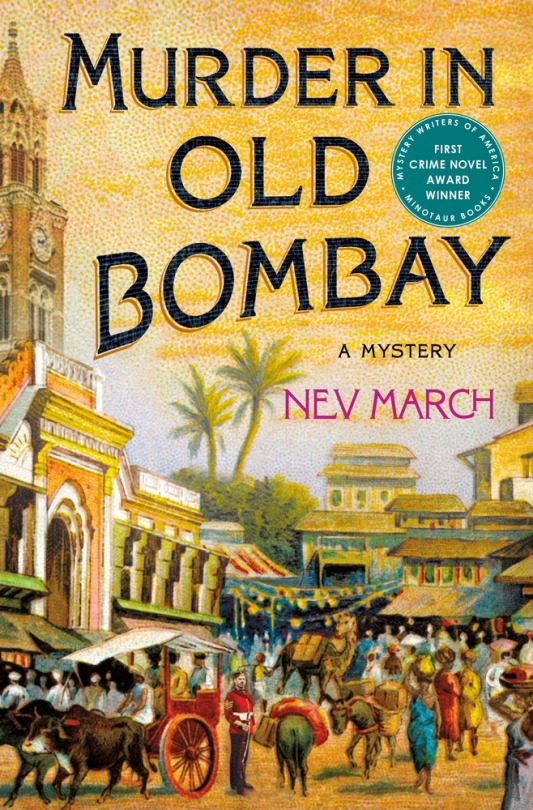


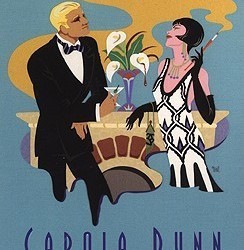

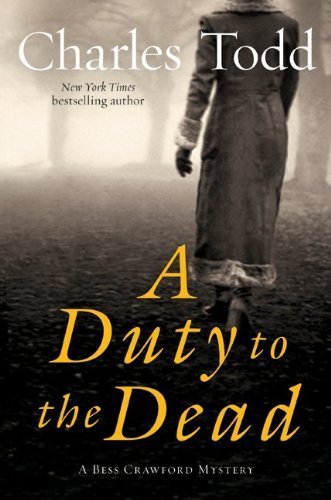
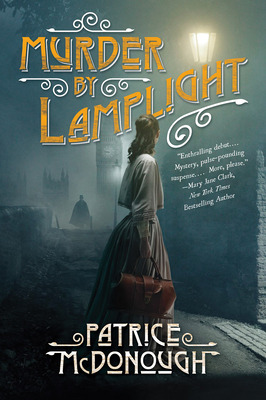
Top Picks:
Veronica Speedwell
1880s, London | POV: First person; heroine
You've probably seen this book listed as a MSATD read-a-like before, because not only is the time period similar, but so is the dynamic between the leads. The main difference is that the protagonists are actually natural historians and not detectives, and some of the plots are more adventure-like (think "Cell 99") than police cases. If I had to pick one series to rec, it's this one.
Molly Murphy
1900s, New York | POV: First person; heroine
While in New York (har har), this series I think has a most general set up to MSATD; a lady detective with an agency that she takes over, and her love interest, a detective with the police force. There's even an Arabella. But don't fret! (ngl, though, this series proves that William wouldn't have an easier time with the NYPD than he does SY… RN might have wanted to do some research…)
Captain Jim & Lady Diana
1890s, India, US, UK | POV: Differs between books, 1st book is more his POV
The first book in this series has a more layered approach with the setting of British India (which is fascinating in its own right), but the next two are more in line with MSATD and the other series listed.
Carpenter & Quincannon
1890s, San Francisco | POV: Third person limited, both hero and heroine
This series is written by a husband and wife duo (HA), and might be a little confusing to figure out the order given the characters' appearances in their other works, but the actual series linked here is about two former Pinkertons who form their own detective agency together. Some of the cases are a little predictable, and there are a few books where their cases don't intertwine as well as the others, but it's still an enjoyable read of two detectives who make it work both professionally and personally.
Other Picks:
Wrexford & Sloane
Regency, London | POV: Third person limited, both hero and heroine
The latest volumes actually name check MSATD in their blurbs. I think the feel is slightly different, given the time period and a few other elements that are clear when you start reading them, but they are similar enough that I get the comparison.
Daisy Dalrymple
1920s, UK | POV: Third person limited, both hero and heroine
1920s historical mysteries with romance are a genre all into themselves, but I recommend this series over some of the others because of the HEA. (also tacking this on here: Miss Fisher's Murder Mysteries is loads better as a TV series, which is why I don't recommend the books).
Inspector Corravan
1870s, London | POV: Third person limited; hero
There's only two of this series so far, but I feel like the male lead has shades of William to him.
Athenian Mysteries
Ancient Greece | Male POV (from what I remember)
This one is off the beaten path compared to the others, but I do recommend it because of the dynamic between the leads and the HEA.
Great series but… the Slow Burn is Still… Slow
Bess Crawford
WWI, UK/France | POV: First person; heroine
I really do like this series, but I have to have a somewhat spoilery caveat: we are still in the slow burn 13 books in. But I have to recommend it anyway, because there's some striking similarities in that the female lead's father is the mentor to the male lead. I will warn you; there are a few books that he barely appears in. So maybe try this one last lol
Promising Start
Dr. Julia Lewis
1860s, London | POV: Third person limited; hero and heroine + villain
My hold on this debut literally showed up the day after I almost finished the post, but I after reading the first one, it's definitely in the same vein (there's also a very overt reference to something that I'm certain is a nod to MSATD...). Looking forward to the next one for sure.
#miss scarlet and the duke#there's also another series that a lot of people rec that I haven't read yet because we don't have it at work (the library) yet#I'll add if I agree at a later date lol#plus there three other series I feel like are similar that I might also add#but yeah I left out a lot of the regency series because it's more like 'a lady randomly gets involved in mysteries'#and it's not quite the same feel imho
14 notes
·
View notes
Text
there’s an episode of SHWEP where earl fontanelle (still can’t believe the guy is named like a thomas pynchon character) interviews a scholar of hellenistic astrology and practicing astrologer, and it’s an interesting discussion, about, like, how astrology was probably practiced historically and the role and development of birth charts, and how that specific kind of astrology was spread from the eastern mediterranean to far-away places like india and china and japan.
but, like
okay, the thing that kills me about astrology specifically as a form of divination, beyond all other forms of divination--all of which are ways of trying to reduce anxiety about the world by increasing the amount of knowledge (we feel) we have--is that haruspicy or yarrow stalks or cartomancy or oneiromancy, those all have a stochastic element to them, right? it’s an aid in pattern-matching, and it makes more plausible, as a diviner, that the information you obtain could be somehow tailored to your specific situation or question because it’s not determined in advance. i mean, the underlying mechanism is still nonsense; there is no mechanism; but “there is no mechanism” and “the mechanism is opaque” are, from the outside, sometimes difficult enough to distinguish in practice (especially to our pattern-matching brains) that it is, from the realm of normal everyday experience, plausible.
but astrology is... the exact opposite of this! since the planets reached their final orbits early in the formation of the solar system, their behavior has been predictable for millions of years in advance. there are No Surprises there, not at the length of human lifetimes or civilizations. ancient astrology was protoscientific in a way that other forms of divination were not, because even without understanding the keplerian laws of planetary motion or having a good theory of gravity, or even a decent model for the solar system as an object, you can make extremely accurate predictions about how the planets move, in a way that is anathema to the basic mechanism of almost all other forms of magic and divination, which must leave room for ambiguity so as to permit belief.
it’s consistent, i guess, in that if you ask the system the same question twice you will get the same answer, but as a method of divination, it completely lacks even basic plausibility. patterns so regular they can be predicted literally thousands of years in advance shouldn’t be something you can plausibly argue the reality of; they should scream at you from every corner of life experience. they should show up in every statistic ever compiled, on any subject. and not just the big stuff, like your sun sign, but all the little details about aspect and rising signs and what not, and moreover, it should be possible to determine which astrological system is correct.
this problem seems so basic that even many ancient astrologers, in both mesopotamia and the greek world, seem to have discounted the divinatory potential of astrology, and treated stuff like the zodiac as modern astronomers do, as simply a form of celestial reference. it is sufficiently different as a practice that even people who thought chicken livers were a good mechanism for inquiry into the future looked at it and said “i dunno, this smells like bullshit to me.”
173 notes
·
View notes
Text
A Dreamtime story from the Nuenonne First Nation of Bruny Island off the Southeast Coast of Tasmania (lutruwita) narrates how [...] a young pup [...] of the “Tasmanian tiger” (thylacine) [...] transformed [...] into corinna [...]. When lutruwita -- Tasmania, also known as Van Dieman’s Land -- was opened for British colonization in 1803, a medley of settlers -- from [...] fortune-seekers to species hunters -- made it to the island in the course of a few years. Travel guides and memoirs published at the time soon dubbed Tasmania the “sanatorium of India,” drawing many British colonists to the island who hoped to recuperate their health debilitated by prolonged stay in the tropics.
More significantly, it wasn’t only materials and bodies that circulated between the colonies [India and Tasmania]. But also ideas, impressions, and experiences gained in one colony made their way to the other. [...]

Settler farmers identified the thylacine as a “blood sucking vampire” [...]. [P]olitician John Lyne -- a representative of the Tasmanian rural lobby -- proclaimed, quite preposterously, that “30000 or 40000 sheep” were taken each year by the thylacine [...]. By 1830, the Van Diemen’s Land Company was already offering a reward for the killing of [...] the “hyena” i.e. the thylacine. Likewise, Mercury reported in 1882 in a piece headlined “Tiger Extermination” that landowners declared “a reward of £5 to be paid for each full-grown tiger [...] and £2 10s, for all cubs [...]." As a result, the animal [...] was extirpated by 1936. Comparison between the thylacine and the Indian tiger abounded in settler discourses [...]. This was in spite of the fact that the thylacine and the Indian tiger were two entirely different species, morphologically and ecologically. [...] Yet early settlers in Tasmania, many of whom had first landed on or had connections in British India carried the idea of the tiger as a ferocious predator [...]. [T]hese representations of the thylacine’s “nature” were based on faulty understanding of the animal perpetuated by myopic colonial science that privileged imperial economic interests above all. [...]
---
One of the major thylacine traders in Tasmania was James Harrison. Known as the “West Coast naturalist,” Harrison purchased and sold about twenty-five live animals and twenty dead specimens of thylacine. He was born in the Nowgong district of Assam in northeast India to a family of speculators en route from England. It is noteworthy that James Harrison spent his childhood in a region in India that was known for its [...] wildlife. Game hunting [...] was [...] [a] common pursuit among the Europeans in Assam [...]. Moreover, the period saw a spike in the visit of professional hunters and species collectors to the region as vast [habitat] was being stripped off to make way for tea plantations. [...]
---
William Thomas Dennison, who served as governors of Van Diemen’s Land (Tasmania) and Madras in India, described in Varieties of Vice Regal Life (1870) the tiger hunts he had organized in India. Dennison’s book reinforced the idea that the tiger is a pest, an impediment to human progress, which echoed his policies towards the thylacine during his stint as the governor of Tasmania (1847-1854). [...]
---
Likewise, Sainthill Eardley Wilmot -- the grandson of Sir John Eardley Wilmot, the lieutenant-governor of Van Diemen’s Land from 1843 to 1846 -- served as a forestry officer in British India. Sainthill was born in Hobart in 1852 and spent his early life there. In My Home In Tasmania (1852), Louisa Ann Meredith mentions the presence of an “untamed” wild thylacine in Sainthill’s grandfather Sir John Eardley Wilmot’s private menagerie in Hobart. Later Sainthill Eardley Wilmot would take a particularly hostile attitude towards the tiger and other big cat species while working as the Inspector General of Forests in British India. [...] He also wrote an it-narrative about the Indian tiger, The Life of a Tiger (1911), that predicted the tiger’s impending extinction. On multiple occasions, he has alluded to the thylacine “wreaking havoc” on flocks of sheep in Tasmania. [...]
The material circulation of the living thylacine in India is little known apart from an exhibition of two live members of the species at Madras Zoo in 1886 [...]. The narrative circulation of the animal, however, has been relatively plentiful.
---
Text by: Bikash Kumar Bhattacharya. "Constellation Spirit, Vicious Vermin, and Icon of Environmental Guilt: Affective Entanglements of the Thylacine in Tasmania and India". The Otter, Network in Canadian History and Environment (NiCHE). Emotional Ecologies series (edited Jessica M. DeWitt and Sarah E. York-Bertram). 20 July 2023. [Image and caption also published and included in Bhattacharya's article. Bold emphasis and some paragraph breaks/contractions added by me.]
38 notes
·
View notes